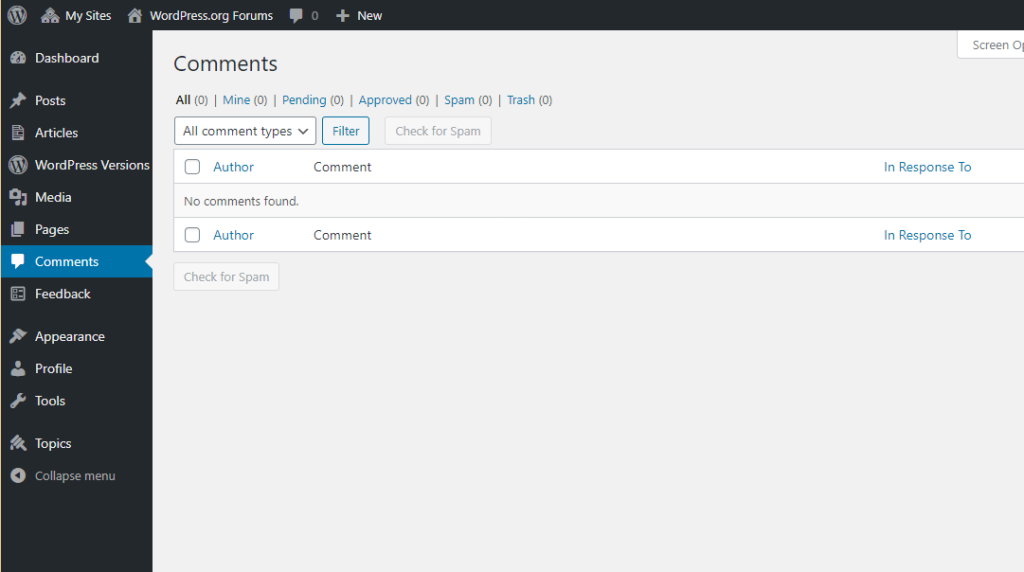Managing Comments: The Best Practices for WordPress Bloggers
Comment management on your WordPress blog is a pretty precise avenue for fostering engagement and building a community around your content. As comments enhance discussions and, in most cases, provide the best kind of positive feedback, moderation for the right cause is required in order to maintain a positive environment. Here are some best practices for the effective management of comments on your WordPress blog.
Enable Commenting Wisely
Decide before you enter in to comment management whether you want to allow comments on all of your posts or selectively. You might, for example, choose to turn comments off on older posts or on content less likely to prompt discussion. To manage this go to the Discussion settings in your WordPress dashboard. You may also want to decide whether a comment should be approved before it shows or when you’d prefer for it to be published straight away. This decision will be made based on the nature and audience of your blog.
Set Clear Guidelines
Establish rules for commenting. This would also play a part in how to build respectful and constructive discourse. Establish a comments policy explaining what is and isn’t acceptable, including types of comments that are subject to deletion, such as spam, hate speech, or personal attacks. Display the comment guidelines on your blog-helpfully posting them to a dedicated page or clearly hyperlinking to comments section. Clear expectations help deter inappropriate comments in that most people will keep the necessary standards required for a peaceful exchange.
Use Comment Moderation Tools
WordPress has moderation tools built in to help you control your comments. You can set up moderation rules under the Settings > Discussion menu. To that end, you can hold comments for moderation if they contain certain keywords or if they include links. “Comment must be manually approved” allows you to have further control over what appears on your blog; of course, such comes with more effort, but in so doing, only quality contributions appear on the blog.
Engage with Your Readers
Respond to the comments in order to develop and involve the community. You should reply to comments with questions and give thanks to commenters for such priceless input. Let everyone know that you appreciate constructive criticism received on any of your posts. In order to show that you actually care about your readers’ opinion, make them realize that it would mean something to you if they knew what and how you feel. Be friendly and welcoming, while creating your words.
Spam Well Handled
Spam comments litter your blog with useless activity and dilute the meaning of your discussion. For sites like yours, it would be helpful to subscribe to a couple of free anti-spam plugins like Akismet or WP SpamShield. These plugins automatically filter out most suspected spam, freeing your time for other things. Periodically spend some time sifting through your spam folder so that no legitimate comments get caught in there.
Participate Relevant Discussions
To enable quality discussion, you could ask open-ended questions towards the end of your blog articles. This will enable them to share their thoughts and opinions and therefore have meaningful debates. You might also want to emphasize especially illuminating comments in your responses and that can stir others into responding helpfully.
Comment organization
WordPress includes an easy way to control all comments from inside your dashboard. They allow filtering through status for pending, approved, spam, and trash. If you cannot find a comment, search bars are also accessible.
This keeps you organized while you maintain an eye on managing the comments without it becoming monotonous.
So analyze comment trends routinely to identify exactly what topics your audience is most interested in. This will help you guide future content development in the continued quest to address repeated questions or concerns from readers. Monitor tone and nature of comments. This could prove to be a great source of information about the preferences of your audience.
Conclusion
Comments on your WordPress blog are a critical part of creating an interactive community. Setting comments up the right way and having clear rules set some boundaries for comments while ensuring you have a right and proper setting for comments. Interacting with your audience, fighting spam, and fostering meaningful interactions between your readers add that ‘zing’ to both your end and theirs. By wisely managing comments on your blog, you can host some of the best interactive thinking amongst people.
